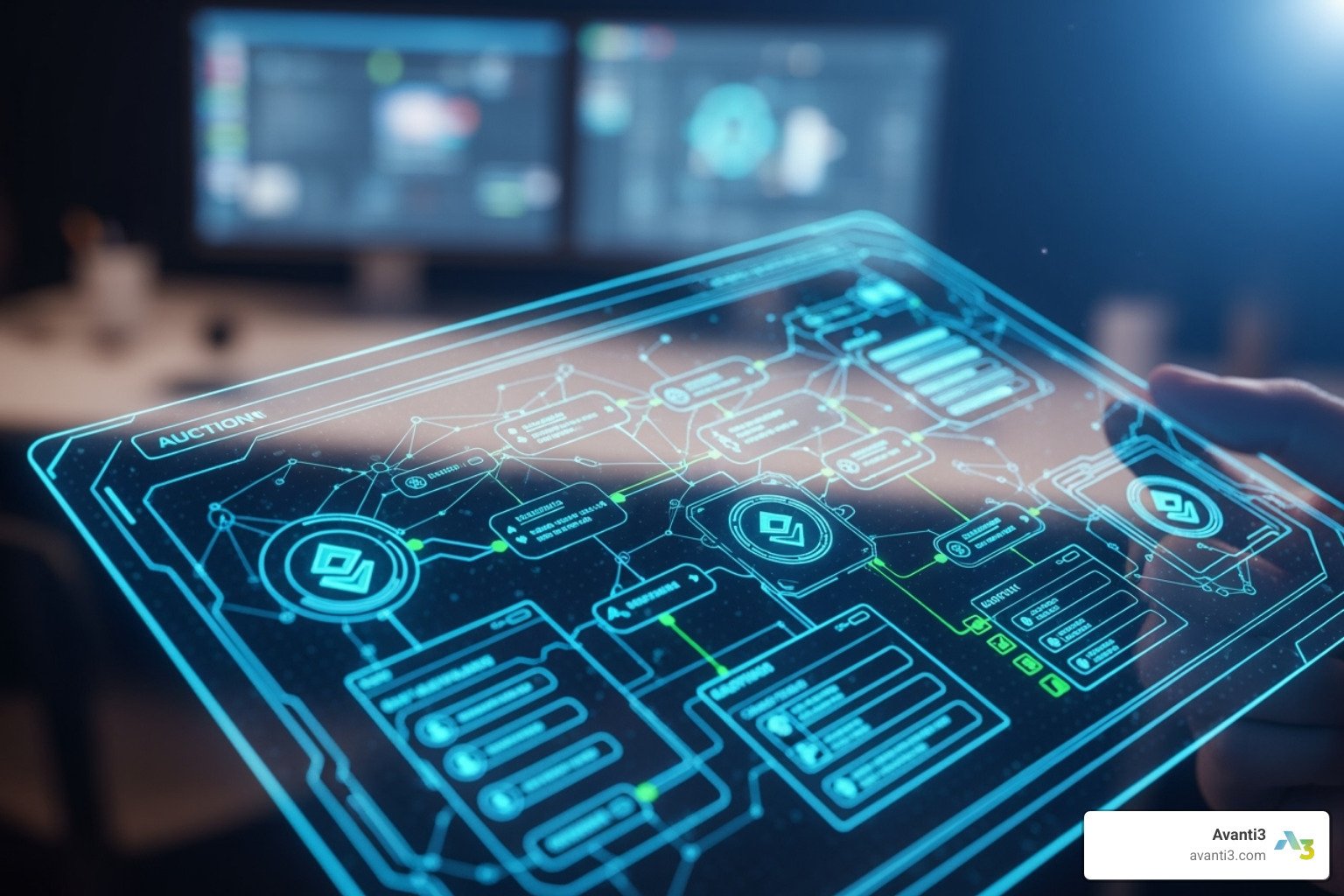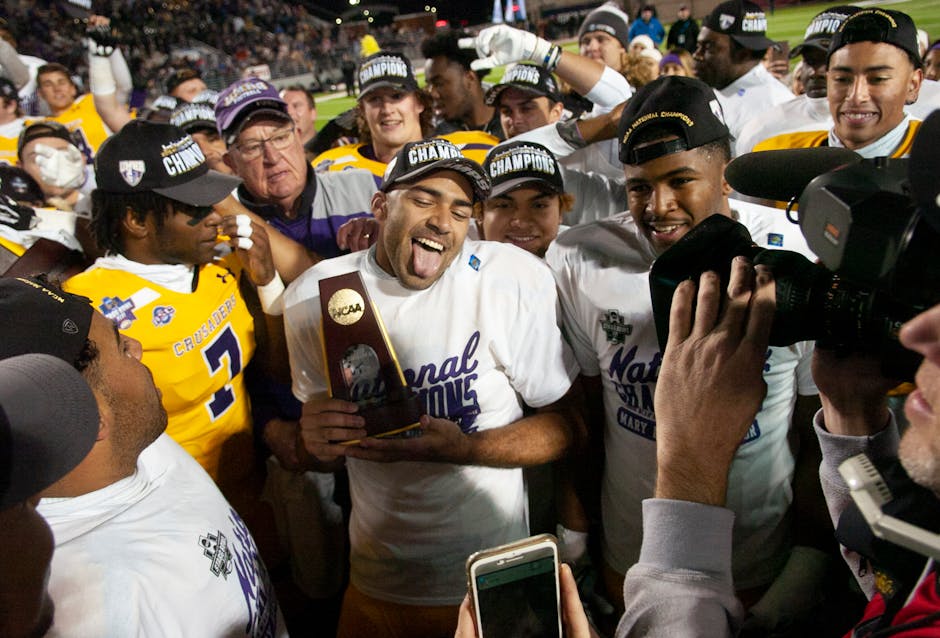Build NFT Marketplace From Scratch: 9 Steps to Success
Why Building Your Own NFT Marketplace Is the Future of Digital Commerce
Learning how to build nft marketplace from scratch is essential for brands seeking control over their digital commerce experience. The NFT sector is booming, with a market projected to hit $13.6 billion by 2027. Unlike established platforms that take large commissions and restrict customization, your own marketplace offers full control over the user experience, revenue, and community features.
NFT marketplaces are powerful because they use blockchain technology to create verifiable digital ownership. This cryptographic proof of ownership opens new avenues for monetizing content, building exclusive communities, and rewarding fans.
The core requirements include:
- Smart Contracts: To handle all transaction logic.
- Blockchain Integration: Connecting to a network like Ethereum, Polygon, or Solana.
- IPFS Storage: For decentralized asset storage.
- Frontend Interface: A user-friendly website.
- Wallet Connection: Integration with wallets like MetaMask.
- Payment System: For processing cryptocurrency transactions.
The development process involves market research, UI/UX design, smart contract and backend development, frontend integration, and testing. Costs can range from $40,000 to over $320,000, but the potential returns are significant in this high-growth market.
I’m Samir ElKamouny AV, and I guide creators and brands through the technical and strategic process of building successful Web3 platforms that drive engagement and revenue.
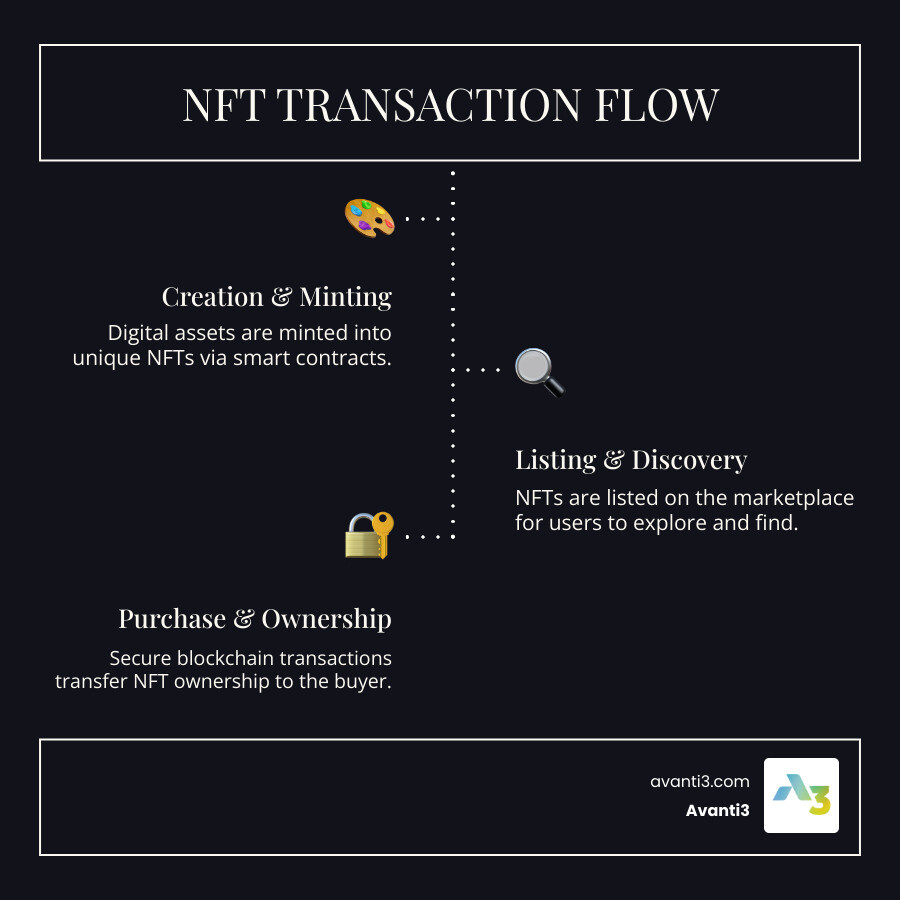
Understanding the NFT Marketplace Landscape
Why build nft marketplace from scratch? It’s about control, customization, and tapping into a market projected to grow from $3.0 billion in 2022 to $13.6 billion by 2027. Building your own platform allows you to define a unique selling proposition, tailor the user experience, and implement revenue models aligned with your vision. Users expect convenience and transparency, and a custom marketplace can deliver on those expectations.
Marketplaces fall into two main categories:
- General-purpose: These are the department stores of the NFT world, supporting a wide array of tokens from art to virtual land.
- Niche-specific: These focus on a particular vertical, such as art, gaming assets, music, or collectibles. Choosing a niche helps focus your UX and marketing, often leading to a more dedicated community.
Markets can also be open, supporting a wide variety of tokens, or closed, using a specific proprietary token often tied to a single game or ecosystem.
At Avanti3, we empower creators with customizable engagement tools. Our Web3 Platform Solutions align with the ethos of building your own marketplace for unique digital experiences.
Core Architecture and Components
Building an NFT marketplace means creating a digital ecosystem that bridges web technologies with the decentralized world of blockchain. Understanding its architecture is crucial.
The key components are:
- Frontend UI: The user-facing interface, built with frameworks like React or Vue.js for a smooth experience.
- Backend Server: The brain of the operation, handling user data and API requests using technologies like Node.js or Python.
- Blockchain Interaction Layer: Connects the backend to the blockchain using libraries like Ethers.js or Web3.js.
- Smart Contracts: Self-executing programs on the blockchain (written in languages like Solidity) that govern minting, sales, and royalties.
- IPFS (InterPlanetary File System): Decentralized storage for NFT metadata and media files, ensuring their persistence.
- Database: Stores off-chain data like user profiles and cached information for performance.
- Wallet Integration: Connects users to the blockchain via wallets like MetaMask or WalletConnect to manage assets and sign transactions.
Essential Features to build nft marketplace from scratch
A successful marketplace needs a robust set of features to be functional and competitive. Your Minimum Viable Product (MVP) should include:
- User Registration and Profiles: To manage accounts and view NFT collections.
- NFT Minting and Listing: An easy process for creators to upload media, add metadata, and set prices.
- Search and Filter Functionality: To help users find NFTs by category, price, artist, and more.
- Bidding and Auction System: To add a dynamic and engaging purchasing option.
- Secure Wallet Connection: Seamless integration with popular crypto wallets.
- NFT Details Page: A dedicated page showing all relevant NFT data, including price, owner, and transaction history.
- Buy/Sell/Bid Mechanics: The core engine allowing users to transact.
- Payment Support: For cryptocurrency payments and optional fiat gateways.
- Admin Dashboard: A backend interface for owners to manage users, listings, and platform activity.
Monetization Models and Differentiators
How will your marketplace generate revenue and stand out? A clear strategy is key.
Common monetization models include:
- Commission Fees: A small percentage (typically 1-5%) of each sale.
- Listing/Minting Fees: A small charge to list or create an NFT.
- Subscription Models: Offering premium features like advanced analytics for a recurring fee.
- Featured Listings: Charging a fee for prominent placement on the site.
- Governance Tokens: Issuing a native token that gives users voting rights and a potential share of revenue.
To differentiate your platform, consider these ‘nice-to-have’ features:
- Multi-chain Support: To broaden your reach across blockchains like Ethereum, Polygon, and Solana.
- NFT Creation Tools: To simplify the minting process for non-technical users.
- Airdrops and Rewards: To foster loyalty and build a vibrant community.
- Community Governance: To empower users with voting rights on platform decisions.
- Social Features: To transform your marketplace into a community hub.
At Avanti3, our Digital Reward System can integrate innovative features to build loyal communities and drive fan monetization, turning your marketplace into a thriving ecosystem.
Choosing Your Tech Stack and Ensuring Security
When you build nft marketplace from scratch, your foundational technology and security choices are critical for success. These decisions will define your platform’s performance and trustworthiness.
Popular Blockchains and NFT Standards
Choosing a blockchain is a pivotal decision that impacts gas fees, transaction speed, and scalability. Each network has distinct trade-offs.
| Blockchain Network | Pros | Cons | Typical Gas Fees | Transaction Speed |
|---|---|---|---|---|
| Ethereum | Most popular, largest ecosystem, robust security, strong developer community, battle-tested | High gas fees (can be very expensive during peak times), slower transaction speeds compared to newer chains, scalability challenges | Varies, can be high | ~15-30 TPS |
| Solana | Very fast transactions (thousands per second), low transaction fees, growing ecosystem, good for gaming | Less decentralized than Ethereum (fewer validators), occasional network outages, still relatively newer | Very low | ~65,000 TPS |
| Polygon (Matic) | Ethereum-compatible (Layer 2), low gas fees, fast transactions, eco-friendly (PoS), large user base | Relies on Ethereum’s security for finality, bridges can be points of congestion, some centralization concerns | Very low | ~7,000 TPS |
| BNB Chain | Low transaction fees, high transaction speed, large user base, EVM-compatible | More centralized than Ethereum or Solana, often criticized for less decentralization | Low | ~100-140 TPS |
| Avalanche | High throughput, fast finality, EVM-compatible, subnets for custom blockchains | Smaller ecosystem than Ethereum, still gaining widespread adoption, less mature developer community | Moderate to low | ~4,500 TPS |
Ethereum is the established leader, while Polygon offers Ethereum compatibility with lower fees. Solana is a top choice for high-speed applications.
Understanding token standards is also crucial. These are the rules that ensure NFTs work across different platforms.
- ERC-721: Creates unique, one-of-a-kind tokens, perfect for digital art where each piece is distinct. You can learn more in the official guide on What is an ERC721-compliant token?.
- ERC-1155: A multi-token standard that handles both unique items and multiple copies of the same item in one contract. It’s highly efficient for gaming platforms with diverse assets.
Best Practices for Marketplace Security
Security is paramount; a single vulnerability can destroy user trust. It must be a priority from day one.
- Smart Contract Audits: Non-negotiable. Have third-party experts audit your contracts for vulnerabilities like re-entrancy bugs before launch.
- Secure Coding Practices: Implement safeguards like the checks-effects-interactions pattern and use trusted libraries like OpenZeppelin to prevent common attacks.
- Data Storage and API Security: Protect off-chain data on IPFS and secure all APIs with proper authorization, rate limiting, and HTTPS encryption.
- User Data Protection: Encrypt sensitive information and enforce strong security measures like multi-factor authentication.
- Compliance: Adhere to legal requirements like Know Your Customer (KYC) and Anti-Money Laundering (AML) regulations where applicable.
At Avanti3, our expertise in Blockchain Art Authentication extends to implementing the highest security standards for any NFT platform. In Web3, trust is everything.
How to Build an NFT Marketplace From Scratch: The 9-Step Process
Ready to build? This journey combines technical skill with creative vision. Breaking the development process down into manageable steps makes it approachable.
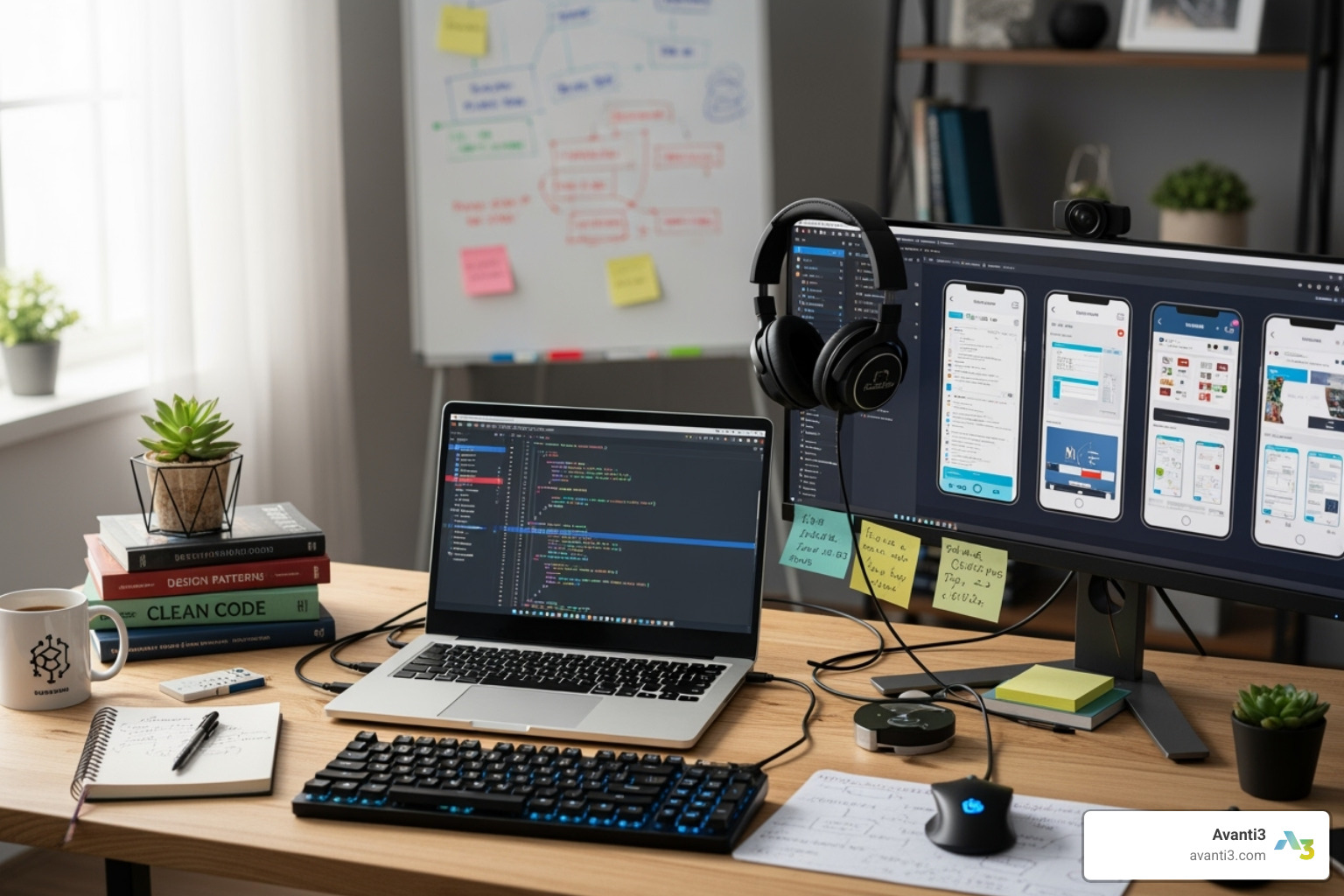
Each phase builds upon the last, creating a solid foundation for your marketplace.
Step 1-3: Findy, Niche, and UI/UX Design
This foundational phase is crucial for long-term success. It involves:
- Market Research: Analyze existing marketplaces to identify gaps and opportunities.
- Define Target Audience: Understand your users’ pain points, motivations, and needs.
- User Flow Mapping: Outline every possible user journey to identify potential friction points.
- Wireframing and Prototyping: Create simple sketches and interactive prototypes to test the user experience before development.
- Brand Identity: Develop a visual style (colors, fonts, aesthetic) that reflects your niche and stands out.
Step 4-6: Backend and Smart Contract Development
This is the technical core of your marketplace. Careful planning here prevents costly changes later.
- Choose a Framework: Select a backend framework like Node.js or Python based on your team’s expertise and platform requirements.
- Smart Contract Development: Write, test, and deploy smart contracts for minting, listing, and secure transactions. Use proven templates from libraries like OpenZeppelin and a development environment like Hardhat development environment for rigorous testing.
- API Integration: Connect your marketplace to essential services like IPFS for decentralized storage and payment processors for transactions.
Step 7-9: Frontend Development, Testing, and Deployment
The final phase brings your platform to life for users.
- Frontend Development: Use a modern framework like React or Next.js to build a responsive, fast-loading interface that connects to your backend and the blockchain.
- Wallet Integration: Ensure seamless and secure connection with wallets like MetaMask and WalletConnect.
- Testing and Security Audits: Conduct comprehensive unit, integration, and end-to-end testing. A third-party security audit is non-negotiable to find and fix vulnerabilities before launch.
- Beta Testing: Invite a small group of real users to test the platform and provide feedback.
- Deployment and Launch: Move from testnets to the live blockchain, configure servers, and implement monitoring systems. A successful launch is just the beginning of your marketplace’s journey.
Post-Launch Strategy and Business Considerations
Launching your NFT marketplace is a major milestone, but it’s just the beginning. The real work involves attracting users, fostering a community, and ensuring your venture thrives.
Costs and Timelines to build nft marketplace from scratch
Understanding the financial and time commitments is crucial. Costs and timelines vary based on complexity, features, and team size.
- MVP (Minimum Viable Product): A basic marketplace with essential features typically costs between $40,000 and $120,000.
- Advanced Marketplace: A platform with features like multi-chain support, advanced analytics, or custom community tools can cost $150,000 to $320,000+.
Development usually takes 4 to 6 months from planning to launch. Remember to budget for ongoing costs like hosting, security updates, bug fixes, and customer support.
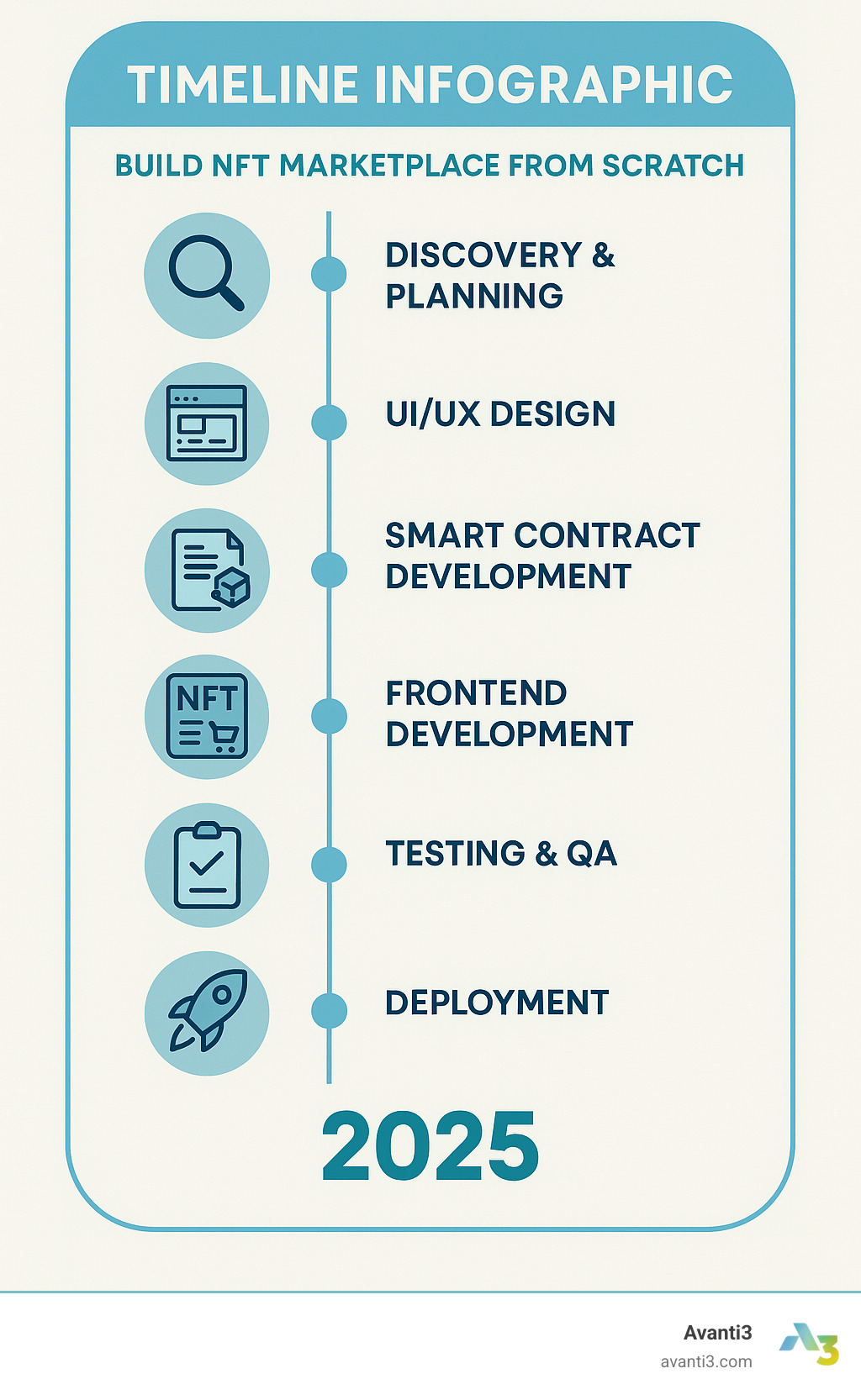
Growing Your Marketplace
Once live, community building and marketing are key. In Web3, community is everything.
- Build Community: Use platforms like Discord and Twitter to engage your audience. Offer incentives for early adopters and reward active participants.
- Marketing Plan: Develop a strategy that includes content marketing, social media campaigns, and influencer collaborations to reach your target audience.
- Gather Feedback: Use an agile approach to development, continuously gathering user feedback to make improvements.
- Stay Current: Keep an eye on emerging trends like multi-chain support, AI integration for personalization, and AR NFTs to stay competitive.
At Avanti3, our expertise in Digital Brand Engagement helps brands connect with their audiences in meaningful ways, setting a new standard in digital experiences.
DIY vs. Partnering with a Development Company
Deciding whether to build in-house or partner with a specialized firm is a critical choice.
A DIY approach requires deep, diverse expertise in blockchain, web development, UI/UX, and cybersecurity. Without this, you risk costly mistakes and delays. While it may seem cheaper initially, the hidden costs of a steep learning curve and potential security flaws can be significant.
A professional development company brings efficiency, established best practices, and a full team of experts. This can reduce errors, accelerate your time to market, and ultimately save money. In a fast-moving space like NFTs, speed is an advantage. A partner can also provide ongoing maintenance and security updates, ensuring your platform’s long-term success.
For those serious about creating a unique, scalable, and secure platform, partnering with an experienced Web3 development company like Avanti3 is often the most strategic move to mitigate risk and accelerate growth.
Frequently Asked Questions about Building NFT Marketplaces
When you decide to build nft marketplace from scratch, several common questions arise. Here are concise answers to the most frequent ones.
How do NFT marketplaces make money?
Marketplaces have several revenue streams. The most common is a commission fee, typically 1% to 5% of each successful sale. Other models include:
- Listing Fees: A small charge for listing an NFT for sale.
- Minting Fees: A service fee for the NFT creation process.
- Subscription Models: Offering premium features like advanced analytics for a recurring fee.
- Featured Listings/Advertising: Charging for prominent placement.
- Governance Tokens: Issuing a native token that can provide holders with voting rights or a share of platform revenue.
What is the most popular blockchain for NFT marketplaces?
Ethereum has long been the leader due to its robust security and large community. However, its high gas fees have led to the rise of alternatives.
- Polygon is a popular Layer 2 solution that offers Ethereum compatibility with low fees and fast transactions.
- Solana is known for its extremely high speed and low costs, making it ideal for gaming and high-volume applications.
Many new marketplaces are opting for multi-chain support to give users maximum flexibility in terms of cost, speed, and security.
What is the difference between ERC-721 and ERC-1155?
These are two primary token standards on Ethereum-compatible chains, each serving a different purpose.
-
ERC-721: This is the standard for creating truly unique, non-fungible tokens. Each token is one-of-a-kind with a unique ID, making it perfect for digital art and rare collectibles.
-
ERC-1155: This is a multi-token standard that can manage both non-fungible (unique) and fungible (interchangeable) tokens within a single smart contract. Its efficiency makes it ideal for gaming, where a project might need thousands of identical items (like potions) alongside unique assets (like a legendary sword).
Conclusion
We’ve covered the landscape, architecture, and step-by-step process to build nft marketplace from scratch. This journey is about more than just technology; it’s about pioneering the future of digital ownership and commerce, where creators have direct control and assets truly belong to their owners.
Bringing a successful marketplace to life requires a blend of technical skill, strategic planning, and an unwavering focus on community. While the investment in time and resources is significant, the potential for innovation and revenue in this explosive market is immense.
At Avanti3, we specialize in navigating this exciting new frontier. We empower creators and brands by providing the tools and expertise to seamlessly integrate Web3 technologies into their vision. Our goal is to help you craft unique digital experiences, build robust reward systems, and foster loyal communities around your digital assets.
Whether you build it yourself or partner with experts, the journey to create your own marketplace is a rewarding one. It’s your chance to shape the future of the digital world, one unique token at a time.

